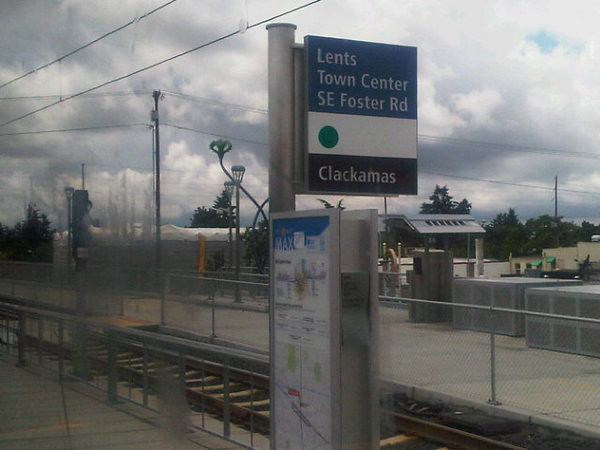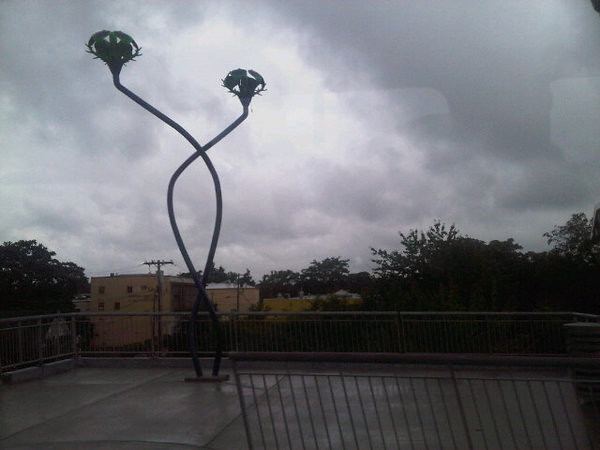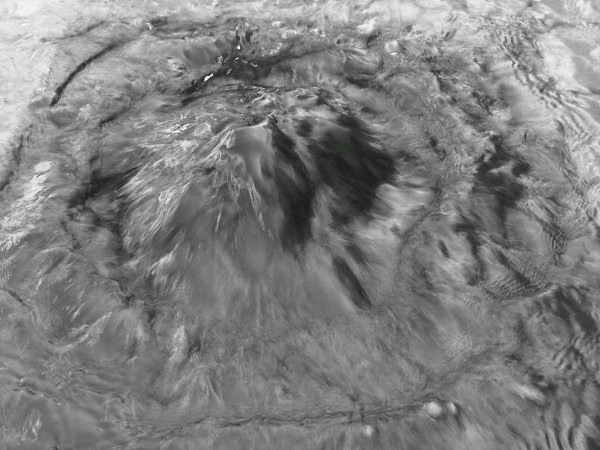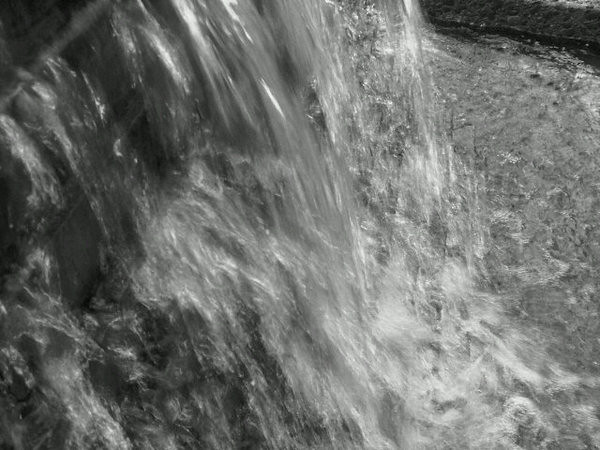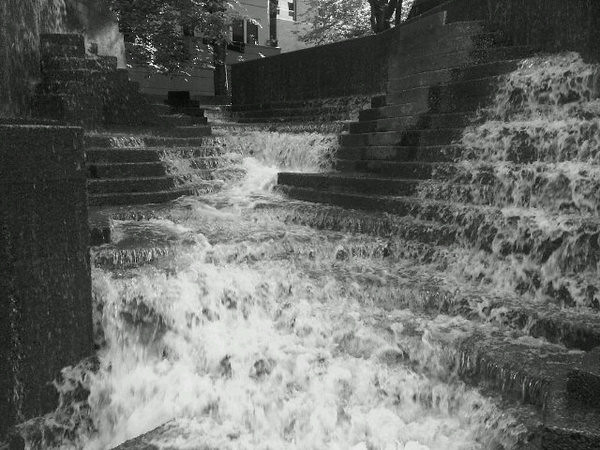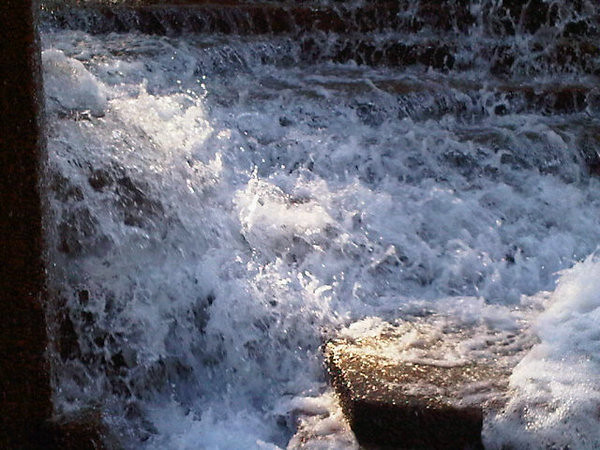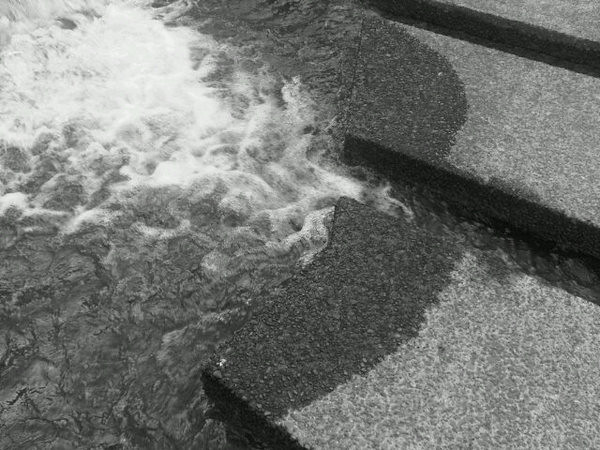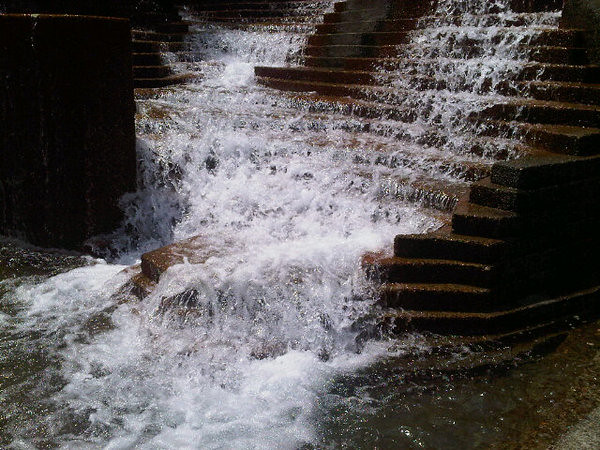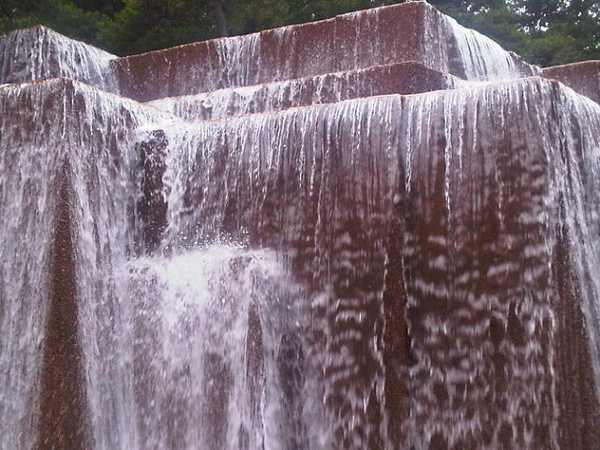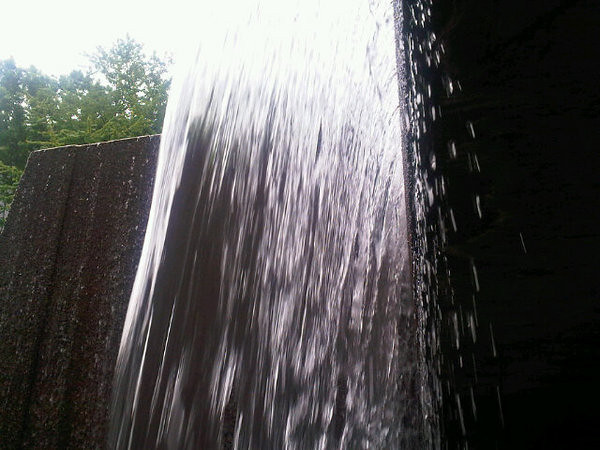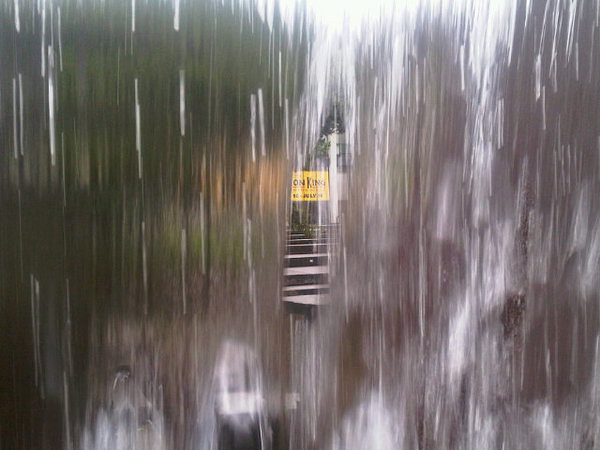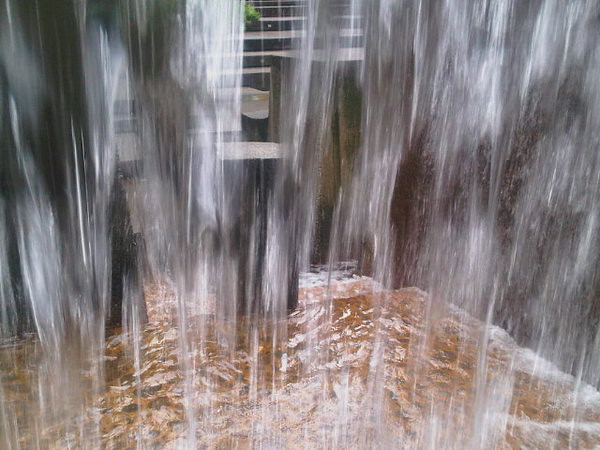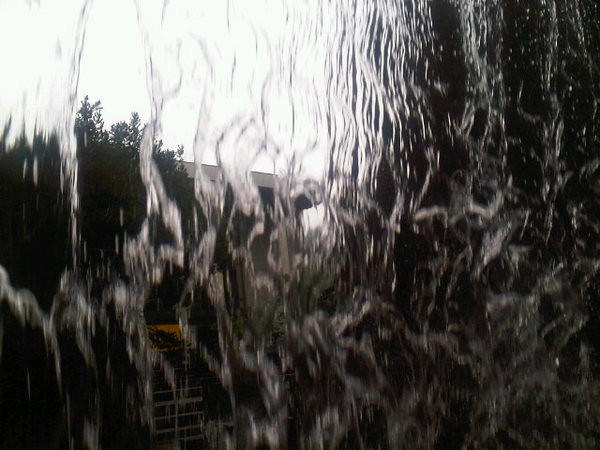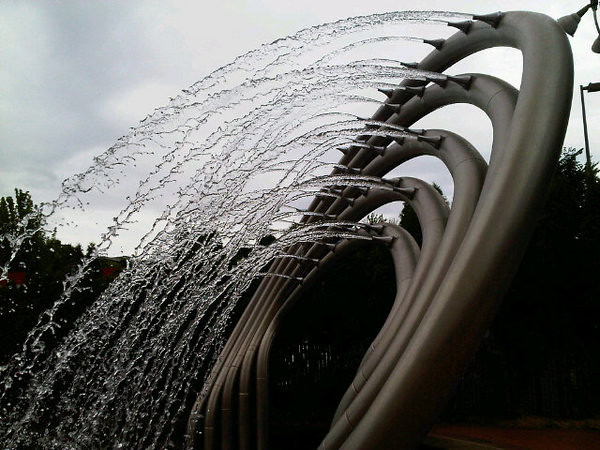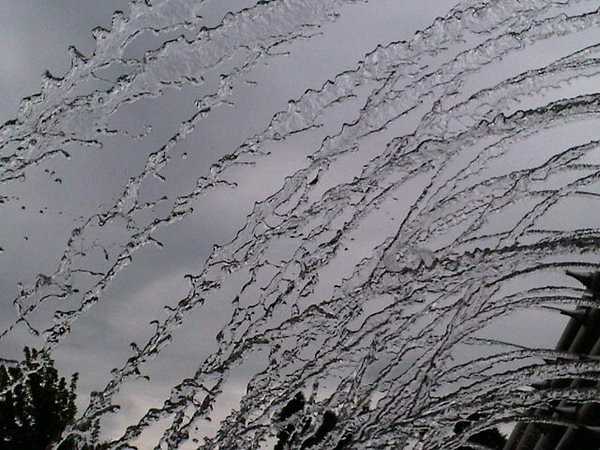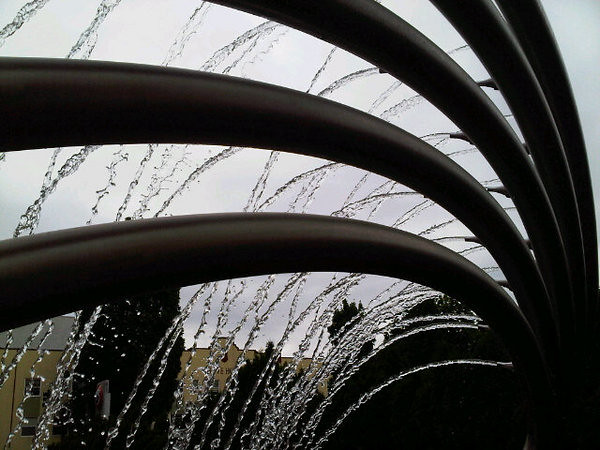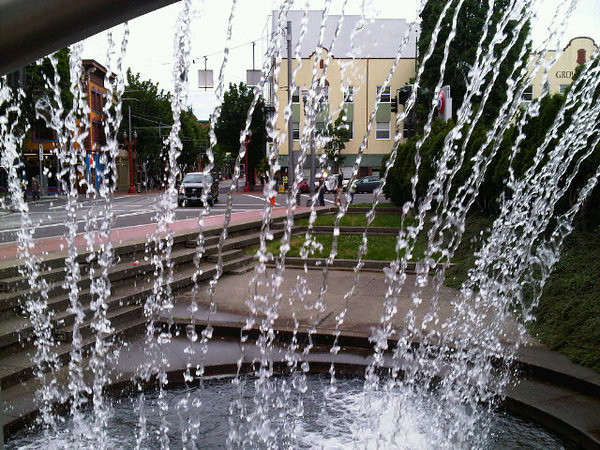By now you're probably getting sick of crappy old Blackberry photos. Believe me, I sympathize, I really do, and at least this one marks the end of the Green Line. As I said in an earlier post, I realize I ought to have gone back and taken better photos, but I realized I wasn't going to get around to it any time soon. Doubly so in this case; this stop is at the Clackamas Town Center MAX station, and taking better photos right now would involve visiting a suburban mall during the Christmas shopping season. I'll go to surprising lengths for y'all, o Gentle Reader(s), and I never get tired of pointing that out, but I have to draw the line somewhere, and I'm drawing it at mall Santas.
In any event, here's TriMet's blurb about the art here:
The Chain of Life, by Richard "Dick" Elliott, includes patterns found in indigenous basketry, pioneer quilts and the spiral shape of DNA. The work appears in the brick pavers of the station platform, in the cut steel designs of the walkway guardrails and in windows of the parking garage elevator shaft.
The photo I have is of one of the pioneer quilt designs, on an elevated walkway from the mall parking lot to the MAX station. It's a better photo than most of my Green Line photos because I had to actually get off the train this time, but it's still just a Blackberry photo and I only took one. In my defense, I didn't realize Chain of Life was a multipart thing, and I wasn't able to look it up on the go with 2010's primitive mobile internet technology. In any case, the artist's website describes the pioneer quilt designs:
The next link in time relates to the settling of Oregon. The cut steel designs on the railings that connect the parking garage to the platform were created to honor pioneer quilt makers. They allow an expression of my long-standing study and appreciation of quilts. Mary Bywater Cross, author of Quilts of the Oregon Trail, was a consultant on this part of the project.
